By Philip Joe Cauchi
Introduction: Within a system of play, constructing an attack occurs mainly in two major ways; short constructive build-up through the thirds or by-passing the midfield through direct play. In this article we are going to look at the number six or the defensive midfielder’s role in the build-up phase.
The defensive midfielder plays an important role in teams adapting a dominant style of play such as F.C. Barcelona and Liverpool F.C. This particular style of play requires the number 6 to be a playmaker – a player with a great vision of play, one who can anticipate and read situations rapidly.
Positioning is of uppermost importance as is the creation of space through movement in order to receive the ball and be able to play forward. Movement is also necessary to create space for other teammates to manoeuvre the ball into advanced zones of the field if the number six is marked. The number six is also known as the low playmaker or the pivot player. He/she provides support and cover to retain possession of the ball and switch the point of attack if a vertical pass is not on.
Location on field: Midfield.
Team complexity level: Inter-sectoral. Position of the number 6 in relation to other midfielders and central defenders.
Team tactical requirement (macro principle of play): Width and depth during the build-up.
Group tactical requirements (sub-principles of play): Movement in midfield to create options for the player in possession. Staggered angles and offensive geometric shape of the team – triangles and diamonds.
Individual tactical and technical requirements (Sub-sub-principles of play): Positioning to receive the ball unmarked. Movement to create self-space or for other teammates (direction and timing of movement). Stance to receive the ball with an open body. Timing of passes.
Game Situations (taken from the match Liverpool v Watford dated 17th March 2018)
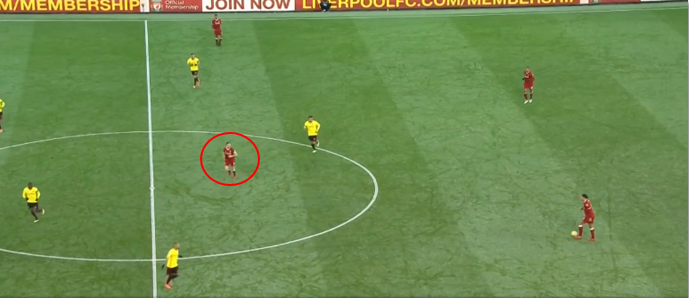
Figure1: The number six (Henderson) looking for spaces between the lines in order to offer support to the central defender with the ball.
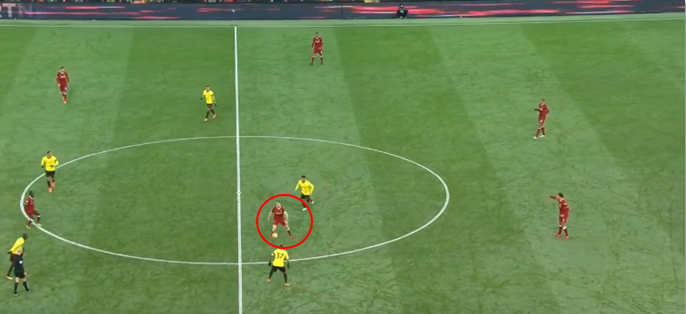
Figure 2: Henderson receives the ball and is able to turn and play forwards. If this is not possible, there is always the possibility to recycle the attack by passing back.
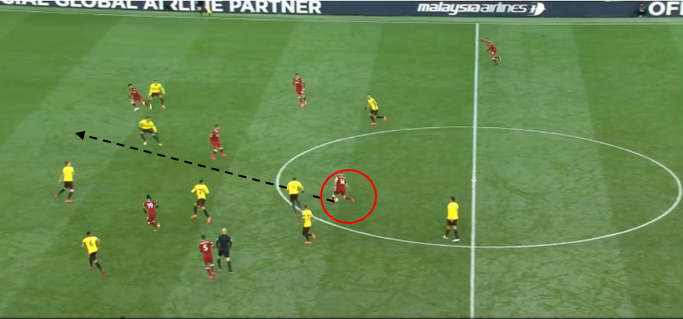
Figure 3: A through pass is on as a result of the time and space gained by receiving the ball unmarked. This pass takes all players of the opposing team out of the game.
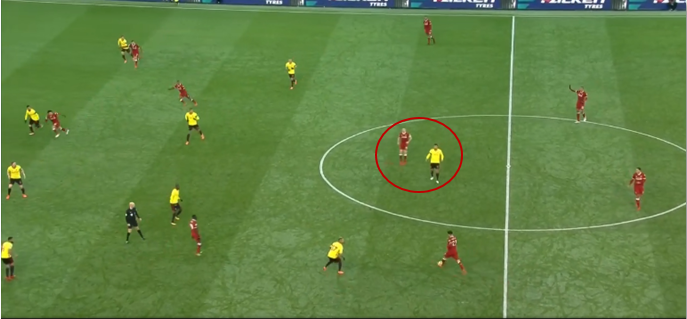
Figure 4: Being marked, Henderson moved to a new angle opening up the middle channel for the central defender to advance with the ball and play a vertical pass.
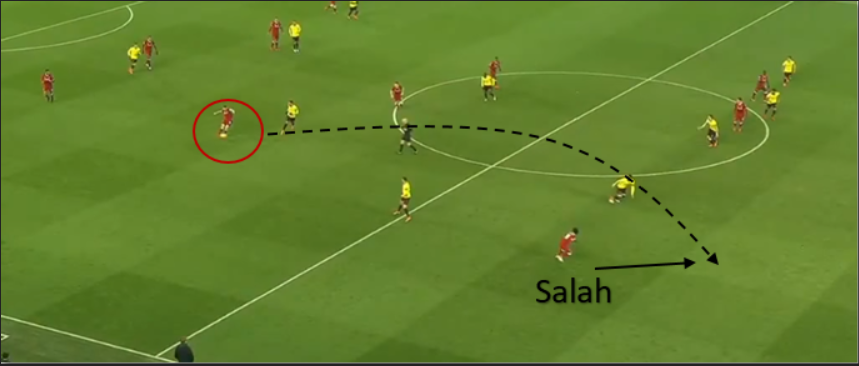
Figure 5: Space gained, a long pass behind the defensive line is a high effective weapon, especially if in the team you have rapid players like Mohammed Salah.
Training Exercises
2v2+1 to Targets - The number 6 Rondo
Setup: Area is 15m x15m with two players for each team inside the area and another two players opposite each other as targets. Another player, the six (red player), plays inside the area with the team in possession. For highly skilled players, reduce the area of play to between 10m x 10m and 12m x 12m.
Execution: Play is 2v2+1 neutral (the number 6). Aim is for both teams to play the ball from one side to another. That is, from one target player to the other to score a point. When the ball reaches one target player, play continues with the two players of the team in possession together with the help of the neutral player aim to transfer the ball to the opposite side (to the opposite target player). If the other team wins the ball, the same sequence restarts but playing to two different target players on a different axis. Exercise may also be carried out by having the target players switching places with the passer; except when the pass is made by the neutral player.
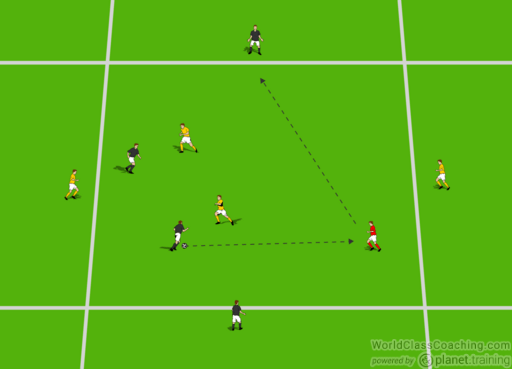
Figure 6: Practice to create and exploit space in midfield with the help of the number six, both on and off the ball.
Training load:
Volume: 2 sets of 6 reps each
Duration each repetition: 1’
Rest between repetitions: 1’
Progression 1:
A minimum pre-set number of passes must be made before passing to the target player. This stretches the midfielders’ ability (inside players) to create and exploit space. Target players can receive the ball and may also be tackled by the opposition. The target player's passes count towards achieving the required number of passes to play to the opposite side. To increase exercise difficulty decrease the area of play as suggested previously.
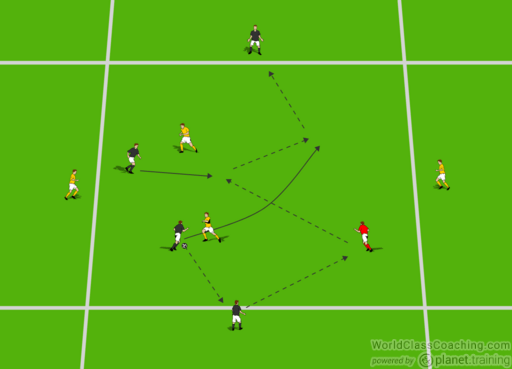
Figure 7: Having a pre-set target number of passes forces the midfielders to move more in order to create space and options to the player with the ball.
Training load:
Volume: 2 sets of 6 reps each
Duration each repetition: 1’
Rest between repetitions: 1’
Progression 2:
The defending team have all their players inside the grid. The coach might need to enlarge the grid to 20m x 20m. There is no maximum number of passes required in order to play the ball to the opposite target player. In the case of a turnover, teams reverse roles.
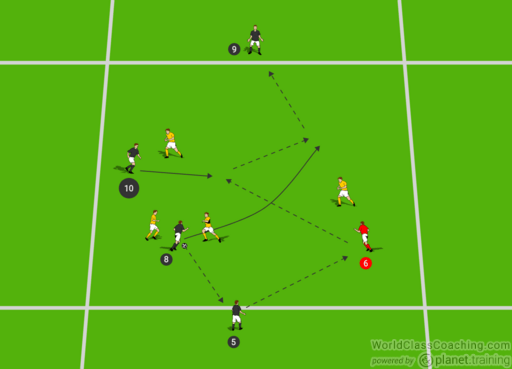
Figure 8: Having a more congested area of play requires more effort from the team in possession to identify, create and utilise space to penetrate. Notice how in the diagram the players are numbered according to their position within the team’s system of play. This helps to strengthen the communication links (verbal and non-verbal but especially non-verbal) to enhance the individual and team performance on match day.
Training load:
Volume: 4 repetitions
Duration each repetition: 3’
Rest between repetitions: 1’
Two-zone build-up rondo
Setup: Area 20m by 12m divided into three zones with a middle channel being 3m x 12m. There are six attackers and three defenders.
Execution: The attackers (blacks) aim to play the ball to the opposite zone and have another player in the middle zone to aid in the build-up. Attackers may play the ball directly or through the middle zone. When the ball is played to the opposite zone, another 3v2 situation in favour of the attackers is created. Rotate the three defenders every minute.
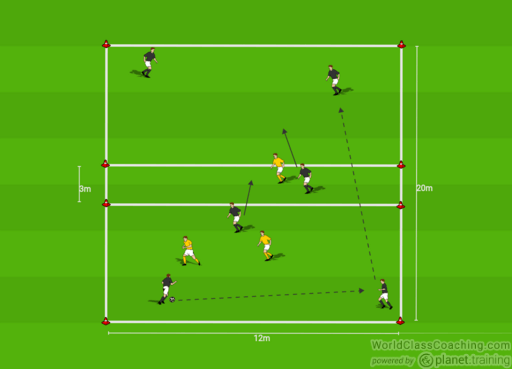
Figure 9: Practice to develop the ability of support and creation of space.
Training load:
Volume: 2 sets of 6 reps each
Duration each repetition: 1’
Rest between repetitions: 1’
Progression: As a progression the attacker in the central zone may rotate with another player in the opposite zone. This creates space for the receiving player to receive the ball unopposed in the central zone. This progression simulates movement to create space and receive the ball between the lines in midfield.
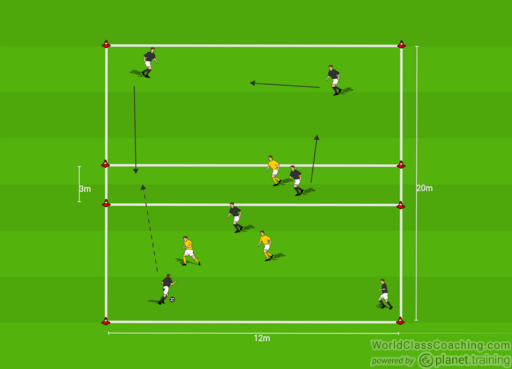
Figure 10: Practice to develop the mobility to create space and forward passing options.
Philip Joe Cauchi works as performance coach in Malta. He holds a UEFA A and a UEFA A Youth Elite coaching licences as well as a B.ed (Hons) in Education with Physical Education and is also a qualified football conditioning coach.


